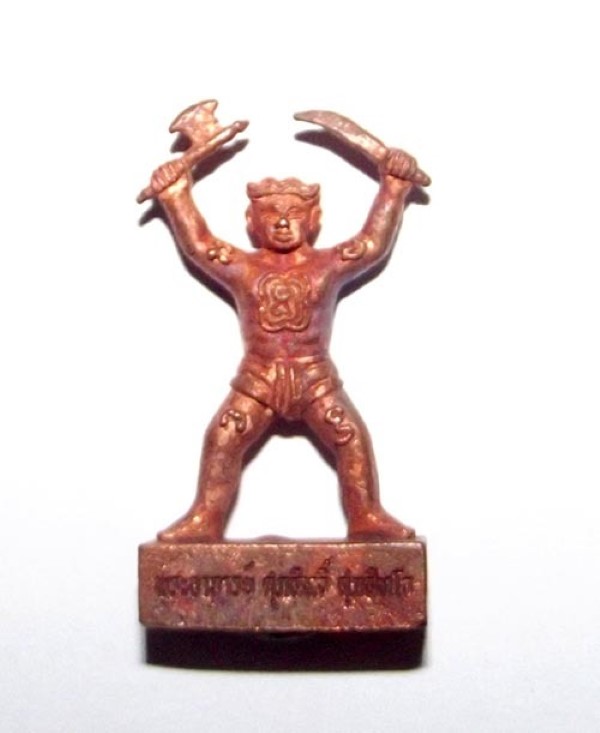
The Hun Payont, an effigy of a Ghost Soldier Spirit Assistant, is a notable artifact, originating from a historical form of animist sorcery, with roots in the ancient Siamese Kingdom and even predating to the apex of the Khmer Empire. This animist practice has demonstrated resilience, persisting through the evolution of religious eras, including the transition from animism to Brahmanism and eventually integrating into the Buddhist era, forming an essential component of the Siamese kingdom’s cultural and religious tradition.
The popularity of the Hun Payont ghost soldier effigy, can be traced back to its potent impact on the existence of individuals who utilize it as a safeguard against perils, larceny, and even dark magic. The effigy is infused with Muan Sarn Sacred Powders, comprising of Paya Wan Dork Tong, Wan Sanaeh Jantr (available in both red and white variants), and Wan Sau Hlong. These sacred powders were unveiled during the Wai Kroo 255 BE Ceremony, further emphasizing the effigy’s profound cultural and historical significance within the Siamese context.

In the history of ancient warfare, amulets have served as a source of solace and fortification for soldiers, extending back to antiquated conflicts. This practice persisted into modern military engagements, such as the Second World War, where a significant number of Thai soldiers were identified as “ghost soldiers.” This moniker is attributed to the prevalent employment of amulets or talismanic magic among these soldiers, serving as a spiritual shield and source of strength. Additionally, many of these soldiers adorned themselves with Sak Yant Sacred Magical Tattoos, a practice believed to bestow spiritual protection and fortitude.
In historical records, the Hun Payont are documented as potent entities that significantly influenced numerous military engagements. These entities possessed the extraordinary capacity to generate Nimitta Mirage representations of themselves, thereby multiplying their presence and creating a deceptive visual impression for the enemy. This optical illusion suggested that a unit of ten soldiers was, in fact, a formidable force of a thousand. The Hun Payont were imbued with sacred Yant, incorporating the influential Kata ‘Hnun Taat See’. This Kata forms the fundamental basis for animating a living entity within an effigy, marking the initial stage of the invocation process. The Yant and Kata of the Hun Payont were pivotal in their creation and utilization, rendering them as formidable elements in battlefield strategy.

The introduction of the Hun Payont into one’s home is a process that begins with the respectful act of lighting five incense sticks, a traditional gesture to honor the presence of indigenous spirits. This is followed by seeking their permission to introduce the effigy into the household. In accordance with cultural customs, this act of welcome is often accompanied by the presentation of offerings, which may include spicy dishes, seafood, or liquor. These are provided as a demonstration of respect and gratitude towards the spirits.
